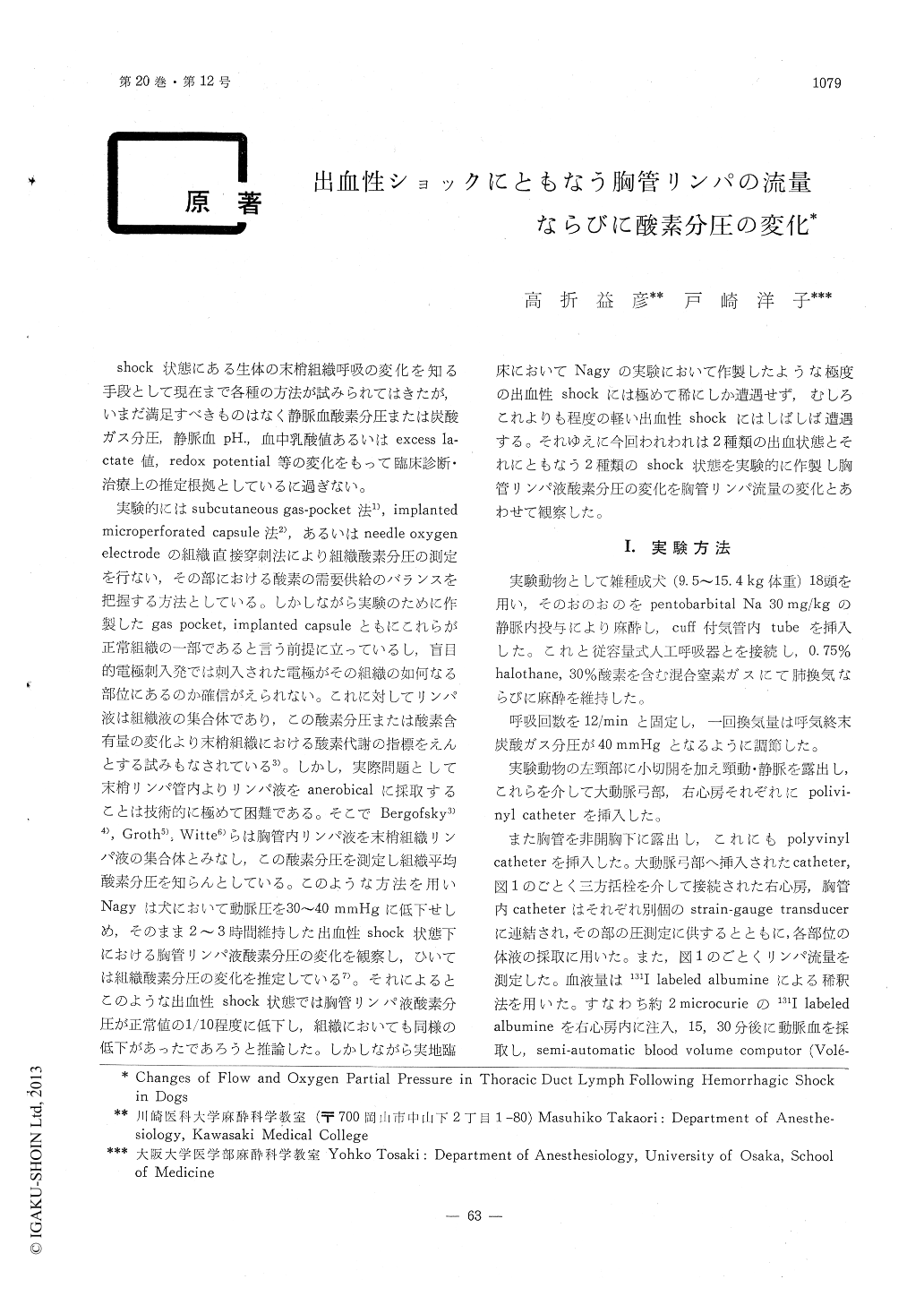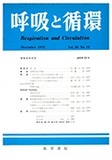Japanese
English
- 有料閲覧
- Abstract 文献概要
- 1ページ目 Look Inside
shock状態にある生体の末梢組織呼吸の変化を知る手段として現在まで各種の方法が試みられてはきたが,いまだ満足すべきものはなく静脈血酸素分圧または炭酸ガス分圧,静脈血pH., 血中乳酸値あるいはexcess la—ctate値,redox potential等の変化をもって臨床診断・治療上の推定根拠としているに過ぎない。
実験的にはsubcutaneous gas-pocket法1), implanted microperforated capsule法2),あるいはneedle oxygen electrodeの組織直接穿刺法により組織酸素分圧の測定を行ない,その部における酸素の需要供給のバランスを把握する方法としている。しかしながら実験のために作製したgas pocket, implanted capsuleともにこれらが正常組織の一部であると言う前提に立っているし,盲目的電極刺入発では刺入された電極がその組織の如何なる部位にあるのか確信がえられない。これに対してリンパ液は組織液の集合体であり,この酸素分圧または酸素含有量の変化より末梢組織における酸素代謝の指標をえんとする試みもなされている3)。
Eighteen mongrel dogs, a cuffed end-tracheal tube intubated, were ventilated with 0.75% halo-thane, 30% oxygen and balanced nitrogen by a piston respirator. Six dogs out of them were maintained under the above condition for about 5 hours, as the control group. Twenty-five per cent of circulating blood volume was bled out in other 6 dogs (M group) and 35% was bled out in the remained 6 (S group).
(1) Following hemorrhage, thoracic duct lymph flow decreased to 78% of control in the M group and to 58% in the S group.

Copyright © 1972, Igaku-Shoin Ltd. All rights reserved.


